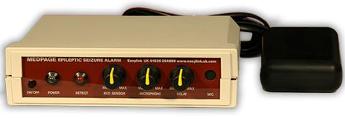More Details
Some overall considerations should be remembered when purchasing a vehicle:
. The driver should be able to operate the vehicle with the least amount of adaptive equipment possible.
. The car should be comfortable for the driver.
. Other considerations include the individual's income, adaptability, safety and, of course, individual preference.
The following is a guideline of features to think about when selecting a
vehicle:
FRONT SEAT
. Bucket seats are generally lower and because they are contoured may provide trunk support, however, bench seats are easier to transfer to and from. If the driver uses a wheelchair he can enter from the passenger side, pulling his wheelchair in after him. If this method is utilised, the wheelchair needs to be properly secured or it may move during transit.
. A central arm rest and side door arm rests can be useful in reducing muscle fatigue whilst driving.
. A high sill or deep foot well may make access difficult. Ensure there is sufficient head clearance between the seat surface and the top of the door frame for easy access.
. The ease of moving the seat forward and back from outside the car as well as inside should be considered, as this may be used when transferring, and/or storing the wheelchair behind the seat. A powered or swivel seat may be an option.
. A seat with vinyl rather than fabric covering is easier to slide into,but also gets hot in summer.
. Lateral shoulder supports can also be added to sides of the seat to maintain support.
SEAT BELTS:
. Seat belts and additional harnesses can be used to maintain support. A fixed seat belt may provide more support than an inertia reel belt as these may tend to give way particularly when the vehicle is moving slowly around a corner. Check with Technical Standards Division of Motor Registration for anchor point requirements.
TRANSMISSION:
. Automatic transmission should be considered in most cases to lessen the number of demands in the already complex driving task.
. Hand controls can only be fitted to automatic transmission.
STEERING AND BRAKING:
. Power steering and braking is required for turning and controlling the car with minimum strength and energy.
. A tiltable steering column enables steering wheel adjustment and can also be useful if transferring space is limited.
. If you have a disability to one side of your body only, controls such as accelerator pedal and indicators can be moved to the other side.
HAND BRAKES: These are often hard to operate for the non- disabled driver and various modifications can be made.
AUTOMATIC TRANSMISSION GEAR SELECTOR:
. The tension of the gear release button may be tight, making it difficult to push in or lift up.
. This can be permanently positioned in or up so that the driver is only required to move the T-bar. However, it is important to ensure the T-bar cannot be accidentally bumped or moved.
INSTRUMENT PANEL:
. Newer models of cars often have essential switches around the steering wheel area. This makes their operation safer whilst driving along. It is recommended that all adjustments, eg. radio,cassette, heaters be made before driving off.
. Switches, knobs and levers can be built up, lengthened or adapted to a toggle variety to ensure easy use. (This may also be necessary for the door latches).
WINDOWS:
. Power windows may be important for some medical conditions. If manually operated ones are used, it is recommended to open or close them before driving off.
AIR CONDITIONING:
. This may be recommended especially for people with quadriplegia, multiple sclerosis and respiratory conditions. Check that controls are within reach.
STORAGE OF THE WHEELCHAIR:
. If storing the wheelchair in the boot:
The wheelchair will occupy a space of approximately 255mm x 965mm x 1040mm with the foot plates removed. Measure your own or better still try it out yourself.
Check the rear lip of the boot, some models have no lip at all.
. If stored behind the front seats:
Check the gap behind the front and rear seat.
A removable platform to fill the rear floor well allows easier loading of the wheelchair, particularly where there is a high sill or a central ridge.
OTHER STORAGE METHODS:
. Use of a roof mounted wheelchair hoist may require special fittings, or roof rack. Check these can be installed.
. A tow bar is required for storing the wheelchair on a rear rack, or a small trailer.
NOTE: Technical Standards of Motor Registration and/or an automotive engineer can advise on requirements of modifications or give other suggestions for modifications.
REMEMBER: TRY
EVALUATE
EXPERIMENT


 subscribers
subscribers 



